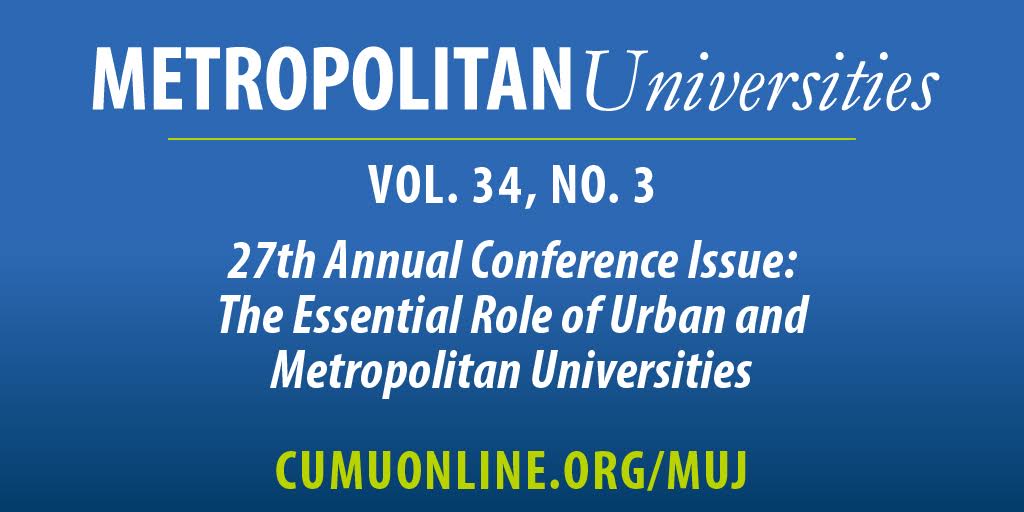Collective Vision: Promoting Leadership, Partnership, and Opportunities to Improve Health in Greater Hazelwood
DOI:
https://doi.org/10.18060/26785Keywords:
partnership, collaborative, health, wellness, community healthAbstract
Greater Hazelwood, a neighborhood located in Pittsburgh, Pennsylvania, saw a decline in residents, businesses, and services at the decline of the steel industry. Residents, philanthropic organizations, advocates, health centers, schools, universities, and community-based organizations continue to collaborate to revitalize the Greater Hazelwood neighborhood. Duquesne University Center for Integrative Health was engaged by a place-based grantmaking strategy in Greater Hazelwood to explore the creation of a collaborative partnership between universities, federally qualified health centers (FQHCs), schools, residents, and community-based organizations to improve access to comprehensive and quality healthcare in Greater Hazelwood. This collaborative designed health and wellness programs based on community-identified health priorities to improve health outcomes. These programs provide opportunities to for multi-sector partners and interdisciplinary health professionals to meet residents where they are, decrease disease disparity, and promote health equity.
References
American Public Health Association. (2022). Community Health Workers. Retrieved November 21 from https://www.apha.org/apha-communities/member-sections/community-health-workers
Centers for Disease Control and Prevention. (2020). Community-Clinical Linkages: Implementing an Operational Structure with a Health Equity Lens. Atlanta, GA: Centers for Disease Control and Prevention, U.S. Department of Health and Human Services. Retrieved from https://www.cdc.gov/dhdsp/docs/CCL_Health_Equity_Guide-508.pdf
Diabetes Prevention Program (DPP) Research Group. (2002). The Diabetes Prevention Program (DPP): description of lifestyle intervention. Diabetes Care, 25(12), 2165-2171. https://doi.org/10.2337/diacare.25.12.2165
Dorn, C., & Johns, L. (2022). Stengthening Community Collaboration: Lessons Learned in Greater Hazelwood (The Tropman Report, Issue 1). https://sustainablepittsburgh.org/wp-content/uploads/1649269969347.pdf
Elliott, J. P., Christian, S. N., Doong, K., Hardy, H. E., Mendez, D. D., & Gary-Webb, T. L. (2021). Pharmacist Involvement in Addressing Public Health Priorities and Community Needs: The Allegheny County Racial and Ethnic Approaches to Community Health (REACH) Project. Prev Chronic Dis, 18, E07. https://doi.org/10.5888/pcd18.200490
Elliott, J. P., Morphew, T., Gentile, D., Williams, P., Barrett, C., & Sossong, N. (2022). Improved asthma outcomes among at-risk children in a pharmacist-led, interdisciplinary school-based health clinic: A pilot study of the CAReS program. Journal of the American Pharmacists Association, 62(2), 519-525.e511. https://doi.org/10.1016/j.japh.2021.11.008
Forno, E., & Celedon, J. C. (2009). Asthma and ethnic minorities: socioeconomic status and beyond. Curr Opin Allergy Clin Immunol, 9(2), 154-160. https://doi.org/10.1097/aci.0b013e3283292207
Fraser, J. (2017). Next Stage. h, (1), 2-7. https://www.heinz.org/UserFiles/Library/2017_Issue_1-complete.pdf
Gentile, D. A., Morphew, T., Elliott, J., Presto, A. A., & Skoner, D. P. (2022). Asthma prevalence and control among schoolchildren residing near outdoor air pollution sites. Journal of Asthma, 59(1), 12-22. https://doi.org/10.1080/02770903.2020.1840584
Hsu, J., Qin, X., Beavers, S. F., & Mirabelli, M. C. (2016). Asthma-Related School Absenteeism, Morbidity, and Modifiable Factors. Am J Prev Med, 51(1), 23-32. https://doi.org/10.1016/j.amepre.2015.12.012
Perez, M. F., & Coutinho, M. T. (2021). An Overview of Health Disparities in Asthma. Yale J Biol Med, 94(3), 497-507.
Powers, M. A., Bardsley, J., Cypress, M., Duker, P., Funnell, M. M., Fischl, A. H., Maryniuk, M. D., Siminerio, L., & Vivian, E. (2016). Diabetes Self-management Education and Support in Type 2 Diabetes: A Joint Position Statement of the American Diabetes Association, the American Association of Diabetes Educators, and the Academy of Nutrition and Dietetics. Clin Diabetes, 34(2), 70-80. https://doi.org/10.2337/diaclin.34.2.70
Shimbo, D., Abdalla, M., Falzon, L., Townsend, R. R., & Muntner, P. (2015). Role of Ambulatory and Home Blood Pressure Monitoring in Clinical Practice: A Narrative Review. Ann Intern Med, 163(9), 691-700. https://doi.org/10.7326/m15-1270
Taggart, V. S., Zuckerman, A. E., Sly, R. M., Steinmueller, C., Newman, G., O'Brien, R. W., Schneider, S., & Bellanti, J. A. (1991). You Can Control Asthma: evaluation of an asthma education program for hospitalized inner-city children. Patient Educ Couns, 17(1), 35-47. https://doi.org/10.1016/0738-3991(91)90049-b
Uhlig, K., Patel, K., Ip, S., Kitsios, G. D., & Balk, E. M. (2013). Self-measured blood pressure monitoring in the management of hypertension: a systematic review and meta-analysis. Ann Intern Med, 159(3), 185-194. https://doi.org/10.7326/0003-4819-159-3-201308060-00008
Downloads
Published
Issue
Section
License
Copyright (c) 2023 Lisa Ripper, Michelle Figlar, Timothy Smith, Jerome Gloster, Chad Dorn, Jennifer Padden Elliott

This work is licensed under a Creative Commons Attribution 4.0 International License.



